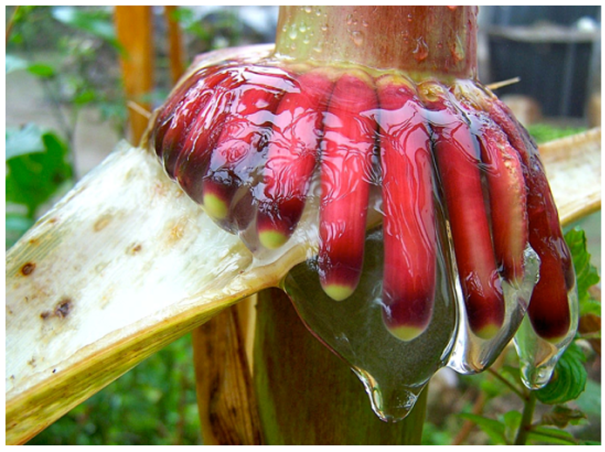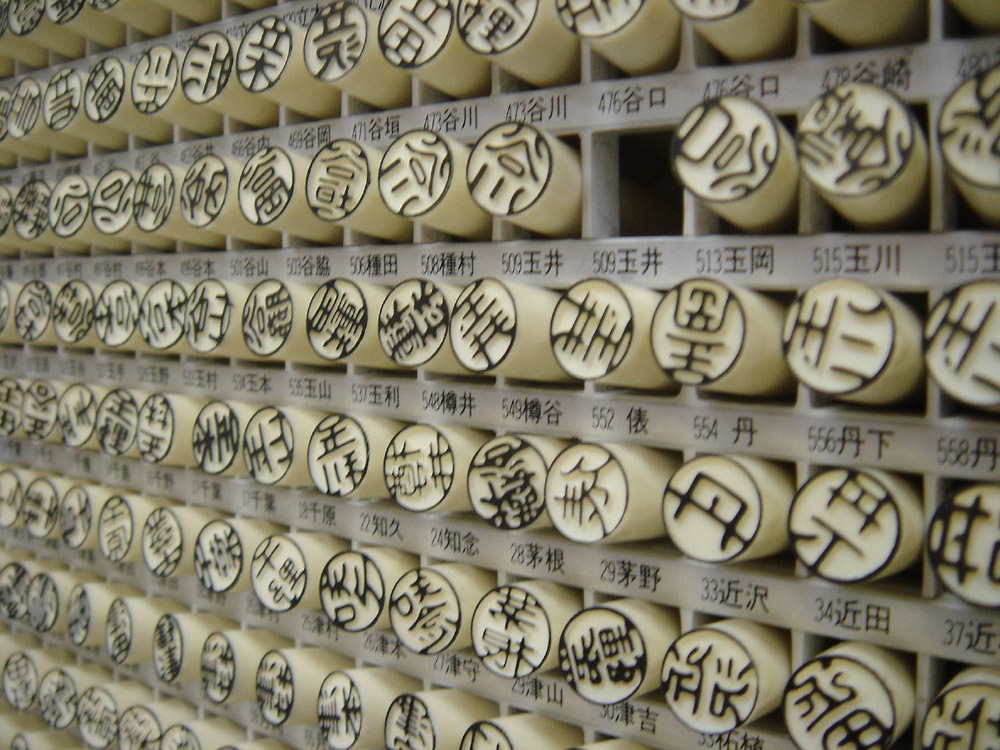Corn (called ‘maize’ in European English) is a miracle grain that is more productive than any other under a wide variety of ecological conditions. Only sugar cane, rice sweet potatoes and “Irish” potatoes rival corn at producing the most calories per acre, but corn is cheaper to produce in most of the world and can be grown in a wide variety of ecosystems from the tropics to ly. Corn is more productive partly because it (and sugar cane) has C4 metabolism which makes it much more productive at photosynthesis and less water hungry than 95% of flowering plants. Despite its miraculous productivity, it never transformed the diet of the world outside of Mesoamerica because the rest of the world never understood why Mesoamericans always laboriously performed a bizarre chemical reaction on it before eating it. Mexican (and Central American) cuisine is relatively unknown outside of the Americas. Whereas Mexican restaurants are ubiquitous in North America, they are extremely rare on other continents and perhaps this unusual chemical reaction helps explain why Mexican cuisine has not spread around the old world.
Corn is a grass, but a grass that’s been so extensively modified genetically that it’s barely recognizable (to non-specialists like me) as a member of that family. Wait…genetically modified? Yes, and I’m not talking about the really modern tricks that gave us Bt corn or Roundup Ready corn. In fact, the wonderful stuff they grow in Iowa is quite different from the plants that humans first started to harvest and domesticate in Central America a few millenia ago. Corn as we know it is the result of a major evolutionary transformation, driven by selection at the hands of humans.
For many years, the origin of corn was a mystery. Like most known crops, it was domesticated 6000-10,000 years ago. But unlike other crops, its wild ancestor was unknown until relatively recently. Why this odd gap in our knowledge? Well, it turns out that corn is shockingly different …from its closest wild relative, which is a grass called teosinte, still native to southwestern Mexico. In fact, corn and teosinte are so different in appearance that biologists initially considered teosinte to be more closely related to rice than to corn, and even when evidence began to suggest a genetic and evolutionary relationship, the idea was hard to accept…
…But it is now clear that teosinte… is the direct ancestor of corn… A cross between corn and teosinte yields healthy, fertile offspring. So, amazingly, despite being so different in appearance that biologists initially considered them unrelated, corn and teosinte are clearly members of the same species.
The Difference Between Teosinte and Maize is About 5 Genes:

| The small ear of corn on the left is a “primitive” ear; the brown thing on the right is an ear from pure teosinte. (Both are about 5 cm long.) The “primitive” ear is similar to archaeological specimens representing the earliest known corn. Images from John Doebley, “The genetics of maize evolution,” Annual Review of Genetics 38:37-59, 2004. |
|
|
| The thing on the far left is a teosinte “ear,” the far right is our friend corn, and the middle is what you get in a hybrid between the two. |
 |
|

Maize cobs uncovered by archaeologists show the evolution of modern maize over thousands of years of selective breeding. Even the oldest archaeological samples bear an unmistakable resemblance to modern maize.
Photo © Robert S. Peabody Museum of Archaeology, Phillips Academy, Andover, Massachusetts. All Rights Reserved.

A tiny cob of Teosinte sits on a cob of modern Hopi Blue corn.
Vox:
As maize became domesticated in Mesoamerica, it was radically altered through selective breeding. Early farmers would examine their plants and save the seeds of those that were larger or tastier, or whose kernels were easier to grind. By 4000 BC, cobs were already an inch long. Within just a few thousand years, cobs had grown to many times that size…
Nowadays, corn is grown all over the planet, and humans are still making changes using more advanced breeding techniques. In the 1980s, for instance, seed companies turned to genetic engineering — so, for instance, scientists inserted genes from Bt soil bacteria into corn to help the plant ward off pests. And some researchers are hoping to develop corn varieties that can withstand drought.

Some varieties are even more remarkable. In Oaxaca Mexico, Native American breeders produced a variety of corn that takes 6-8 months to mature, more than double the time Ohio corn takes, and grows 16 to 20 feet high which, again, is more than double the height of Ohio corn. Most remarkably, it fixes its own nitrogen out of the air just like legumes but using red aerial roots that emit a clear slime which supports a nitrogen-fixing bacteria.

Scientists have been dramatically improving the productivity of corn:

The development and refinement of the Haber-Bosch process of synthesizing nitrogen may be responsible for about 30%-50% of this increase (lamentably using 1%-2% of the world’s fossil fuels in the process).
At the DNA level, all the major cereals — wheat, rice, maize, millet, barley, and so on — are surprisingly alike. But despite their genetic similarity, maize looks and acts different from the rest. It is like the one redheaded early riser in a family of dark-haired night owls. …Maize’s closest relative is a mountain grass called teosinte that looks nothing like it… And teosinte, unlike wild wheat and rice, is not a practical food source; its “ears” are scarcely an inch long and consist of seven to twelve hard, woody seeds. An entire ear of teosinte has less nutritional value than a single kernel of modern maize…
…the modern species [of maize] had to have been consciously developed by a small group of breeders who hunted through teosinte strands for plants with desired traits. …maize was the outcome of a bold act of conscious biological manipulation — “arguably man’s first, and perhaps his greatest, feat of genetic engineering,” [Nina Federoff said,]…”To get corn out of teosinte is so [hard] — you couldn’t get a grant to do that now, because it would sound so crazy… Somebody who did that today would get a Nobel Prize! If their lab didn’t get shut down by Greenpeace….”
Unlike all other cereal grains, corn is so completely domesticated that it cannot even reproduce without human help. Its seeds are so tightly bound to their stalks and well protected in water-repellent husks that they cannot grow without being planted. On their own, their seeds would decompose within their husks without ever touching soil.
But this is only half of the technological marvel of corn. The great civilizations of Central America could not have developed some of the biggest cities of the ancient world and constructed the great pyramids without nixtamalizing the corn.


Is it barbaric to eat limestone mixed in with your food? That is what nixtamalization is. It is the practice of baking limestone and then mixing it with corn. Without nixtamalization, corn is much less nutritious and could not have been the foundation of the Mesoamerican civilizations.
Some edited excerpts from Wikipedia about nixtamalization:
Nixtamalization is a process whereby dry maize grain is soaked and cooked in an alkaline solution, usually made from lime. This process has several benefits including to cause the fiberous outer hull, the pericarp, to separate and float away enabling the remaining grain to be more effectively ground; increasing protein and vitamin content availability; improving flavor and aroma and reduction of mycotoxins. In the Aztec language Nahuatl, the word for this procedure is a compound of nextli “ashes” and tamal “corn dough.”
The ancient process of nixtmalization was first developed in Mesoamerica, where maize was originally cultivated. There is no precise date when the technology was developed, but the earliest evidence of nixtamalization is found in Guatemala’s southern coast, with equipment dating from 1200–1500 BC. The ancient Maya and the Aztecs used lime (calcium oxide, not to be confused with the citrus fruit of the same name) and/or ashes in creating alkaline solutions, while the tribes of North America used natural deposits of sodium carbonate or ashes. The nixtamal process was very important in the early Mesoamerican diet as maize, one of the so-called Three Sisters of agriculture along with beans and squash, was deficient in essential amino acids and niacin. A population depending on untreated maize as a staple food would be malnourished and develop the food deficiency known as pellagra. Cooking with lime enables a balance of essential amino acids and makes available niacin. Without the use of nixamalization, civilization in Mesoamerica would not have existed.
The process has not substantially declined in usage in the Mesoamerican region though there has been a decline in North America whose settlers came from the old world which lacked the custom. Maize was introduced to Europeans by Christopher Columbus and started being grown in Spain as early as 1498. Europeans accepted maize within a generation, but they did not adopt the nixtamalization process, perhaps because the Europeans developed an industrial milling processes that did not need to remove the outer skin (or pericarp). However, without nixtamalization maize is a much less nutritional, leading to outbreaks of pellagra and kwashiorkor in areas where it became a staple grain, such as certain regions of Italy and Africa. Because of this lack of understanding the importance of the processing, maize suffered the stigma of being an unhealthy grain that could stave off starvation but lead to malnourishment. For example, this is why polenta was considered a poor person’s food in Italy until a recent food fad elevated it to gourmet status.
Nixtamalization removes starch granules and makes the proteins and nutrients from the endosperm of the kernel more digestible. The grains take in moisture and calcium which transforms them and allows them to be ground more smoothly into a dough called masa that sticks together better than ordinary (un-nixtamalized) cornmeal. Ordinary cornmeal cannot form tortillas because they would fall apart because it does not stick together. Virtually all commercially produced corn tortillas (and most tortilla chips) use nixtamalized corn because it is usually the cheapest way to get corn to stick together and it is usually labeled “corn treated with lime” in the ingredients list in America.
Lime (‘cal’ in Spanish) is limestone (or seashells or coral) that has been baked in a kiln in a low oxygen environment. Lime reacts with water to produce calcium hydroxide and tremendous heat. It is the portable heat source in self-heating food packages in military rations. It is also a main ingredient in cement, plaster, and mortar which doesn’t make it sound very appetizing. Lime is chewed with a drug called betelnut in Asia and was used with chewing tobacco to enhance nicotine delivery among Native Americans.
The U.S. version of nixtamalized corn to produce hominy and grits (which are dried ground hominy) traditionally uses mild lye (potassium hydroxide), often derived from wood ash. This process does not add calcium to the food.
An new industrial process has been developed known as enzymatic nixtamalization which produces an instant masa flour more cheaply. The process consists of whole kernel corn being cooked in water without any alkaline substances. Water from the initial cooking stage is re-used in subsequent washings or cookings which helps preserves the solids. Then the cooked corn is steeped or soaked in a lime solution (.05%) at 50-60C for three to four hours. Then the corn kernels are decanted, ground coarsely, and dried for milling into masa flour. After milling, additional lime and other substances, are sometimes added to produce a more traditional taste. The benefits of this process is quicker production time; reduced corn solid loss (2% as opposed to 5-14%) and reduced amounts of lime use. Tortilla aficionados generally claim that it produces an inferior-tasting product, but it is replacing the traditional method because it is cheaper (and partly due to a history of Mexican government policies that supported the change in technique).
Nixtamalization has many health benefits. It can increase calcium by 750%, (or 630% more that is available for absorption). Lastly, nixtamalization significantly reduces (by 90-94%) mycotoxins. Other vital minerals increase as well including iron, copper and zinc which can come from the lime being used and/or absorbed from the vessels being used to make nixtamal. Niacin is made available for digestion which would otherwise be inaccessible with non-processed maize. Another important aspect of this process’ benefit is the significant reduction (90-94%) of the mycotoxins which cause disease in animals and possible carcinoma in humans.
If nixtamal is allowed to ferment, riboflavin, protein, also increase along with amino acids, such as tryptophan and lysine.
Nixtamalization makes niacin nutritionally which eliminates the chance of developing niacin deficiency disease, called pellagra. When corn cultivation was adopted worldwide, this preparation method was not accepted because the benefit was not understood. The Mesoamerican societies that originated corn did not suffer from pellagra despite depending on corn for an estimated 50% of daily protein and 70% of calories still today in rural Mexico. Pellagra became common only when corn became a staple in the old world where it was eaten without the traditional nixtamalization.
Pellagra is a vitamin deficiency disease caused by dietary lack of niacin (vitamin B3) or the essential amino acid tryptophan. Because tryptophan can be converted into niacin, foods with tryptophan but without niacin, such as milk, prevent pellagra. However, if dietary tryptophan is diverted into protein production, niacin deficiency may still result. Tryptophan is an essential amino acid found in meat, poultry, fish, and eggs. If your diet contains these foods, your need for niacin from other sources will be reduced.
The main results of pellagra can easily be remembered as “the four D’s”: diarrhea, dermatitis, dementia, and death.
Pellagra can be common in people who obtain most of their food energy from maize, since unnixtamalized corn is a poor source of both niacin and tryptophan. The symptoms usually appear during spring, increase in the summer due to greater sun exposure, and return the following spring. It is one of several diseases of malnutrition common in Africa. It was also endemic in the poorer states of the U.S. South, like Mississippi and Alabama, as well as among the inmates of jails and orphanages. It was common amongst prisoners of Soviet labor camps, the infamous Gulag and can be found in cases of chronic alcoholism. Nixtamalization corrects the niacin deficiency, and was a common practice in native American cultures that grew corn. The amino acid deficiency can also be balanced by consumption of other sources of protein.
Pellagra was first described in Spain in 1735, but Gaspar Casal, published the first clinical description in Asturia in 1762. This led to the disease being known as “Asturian leprosy”, and it is recognized as the first modern pathological description of any syndrome. It was endemic in northern Italy, where it was named “pelle agra” (pelle = skin; agra = rough) by Francesco Frapoli of Milan. Because pellagra outbreaks occurred in regions where maize was a dominant food crop, the belief for centuries was that the maize either carried a toxic substance or was a carrier of disease. It was not until centuries later that medical scientists realized that there is no pellagra in Mesoamerica where maize has always been a major food crop and they realized that pellagra may be caused by other factors.
In the early 1900s, pellagra reached epidemic proportions in the American South. There were 1,306 reported pellagra deaths in South Carolina during the first ten months of 1915; 100,000 Southerners were affected in 1916. At this time, the scientific community still held that pellagra was probably caused by a pathogen or some unknown toxin in corn. It was so bad that a special congressional appropriation to the U.S. Public Health Service (PHS) set up the Spartanburg Pellagra Hospital in Spartanburg, South Carolina, as a facility dedicated to discovering the cause of pellagra in 1914 by. The Surgeon General of the United States assigned Joseph Goldberger to study pellagra at the Spartanburg Pellagra Hospital and in 1915 he successfully induced the disease in prisoners in order to show that pellagra was linked to diet. By 1926, Goldberger established that a balanced diet or a small amount of baker’s yeast prevented pellagra. Skepticism still persisted in the medical community until 1937 when Conrad Elvehjem showed that the vitamin niacin cured pellagra (manifested as black tongue) in dogs. Later studies by Tom Spies, Marion Blankenhorn and Clark Cooper established that niacin also cured pellagra in humans, for which Time Magazine dubbed them its 1938 Men of the Year in comprehensive science.
Pellagra sufferer with skin lesions:
Pellagra is even causing the extinction of European hamsters in cornfields.
If you liked this topic, check out the parallels in the story of the spread of rice.
















Fascinating thank you
[…] the late 1400s in Italy and later elsewhere. Although corn spread around the world rapidly, the nixtamalization process that made it much more nutritious never made it out of North […]
[…] After the Americas were colonized, the conquistadors brought corn back to the old world where it dramatically increased agricultural productivity, but it did not become the basis for high population density like in Mesoamerica partly because the Eurasians did not learn to soak it with baked limestone before eating it, a process known as nixtamalization. […]